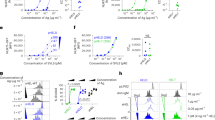Abstract
Gross Cell-Surface Antigen (GCSAa) was obtained from W/Fu (C58NT)D lymphoma cells by Nonidet P40(NP40) or 3M KCl extraction and further purified by Sephadex G200 filtration. GCSAa was associated with lipids (dipalmitoylphosphatidycholine, cholesterol and dicetylphosphate, in molar ratios of 7:2:1) to form multilamellar liposomes. The amount of protein associated with liposomes was found to be proportional to the protein concentration of the sensitizing cellular extract and to the amount of phospholipids used and, under defined conditions, 22-55% of the protein of the cellular extract could be associated with liposomes. Analysis of disrupted sensitized liposomes showed that the GCSAa-specific activity of the liposome-associated proteins was quite similar to that of the proteins of the sensitizing cellular extract. Ultracentrifugation of disrupted liposomes showed that about 75% of the liposome-associated GCSAa activity was firmly associated with lipids and that little GCSAa was trapped within aqueous compartments between lipidic lamellae. 1.8--8.0% of the liposome-associated GCSAa was expressed at the liposome surface. No striking differences in degree of GCSAa association were found between liposomes sensitized by NP40 or by 3M KCl extracts. Storage experiments at +4 degrees C showed that GCSAa-sensitized liposomes were fairly stable.
Similar content being viewed by others
Rights and permissions
About this article
Cite this article
Sakai, F., Gerlier, D. & Doré, J. Association of gross virus-associated cell-surface antigen with liposomes. Br J Cancer 41, 227–235 (1980). https://doi.org/10.1038/bjc.1980.34
Issue Date:
DOI: https://doi.org/10.1038/bjc.1980.34
- Springer Nature Limited




